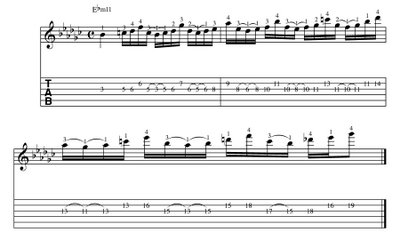Kurt Rosenwinkel has inspired me.

I heard him for the first time in 2004 at the Ballard Jazz Festival with the Brian Blade Fellowship and my mind was blown! He's a samurai among guitarists. I decided to take an analytical stance from the first because there was absolutely no question that I loved his music but there was definitely a long road ahead to discovering what I was hearing and how it was played. I started to transcribe and listen a lot. I shamelessly saved up and bought a D'Angelico and a Line 6 delay modeler. I caught myself in full on imitation mode, which I wish to say is a great way to learn from those you admire. It goes without saying that I don't sound like Kurt Rosenwinkel, however I have gleaned some great sounds and ideas, as well as assurance and inspiration from his music and his own words. Talking to him briefly after a concert, he impressed upon the importance of listening to your own voice and giving it a place of importance in your music. I have to admit that I have expanded this to mean giving yourself a place of importance in the music, a most rewarding challenge. It gives you honesty and that can be both affirming and alarming but it is always real. I feel about my playing the same way I do about my voice. It is a part of me that I can, indeed must live with and which I use to communicate. I am grateful I possess the ability to play an instrument but sympathizing my playing with my voice has given it a deeper meaning. I find that the idea applies to practice as well. I am convinced that playing only for yourself is just about the same as talking to yourself. It might be useful to think things out but it definitely has a point of diminishing returns. Just reach out and have a conversation. That's not a tangent but I do want to get to an example of a musical idea I learned from transcribing Kurt. This lick can be heard 2 minutes and 17 seconds into “Minor Blues” on Kurt’s Verve release, “The Next Step.” It demonstrates his use of movable motives and hemiola figure that he is known for. By setting a five-note motif to a four note rhythmic grouping, in this case sixteenth notes, he is shifting the accent to a different note of the motif in each successive repetition. This lick so sparked my interest in this subject that I wrote an encyclopedic study of movable motives and then compiled them with analysis into a book I’m calling Motivic Mastery. Basically, it is a great help to anyone wishing to incorporate this idea into his or her vocabulary and takes the guesswork out of fingerings. Look for it on my webpage, www.danielrainard.com.

0 Comments:
Post a Comment
<< Home